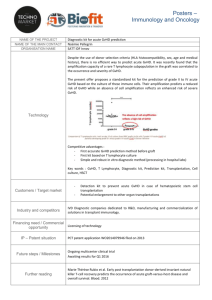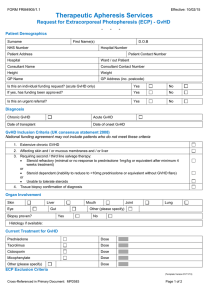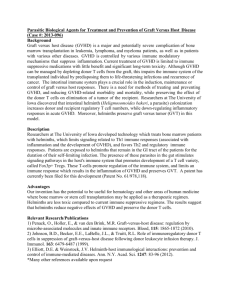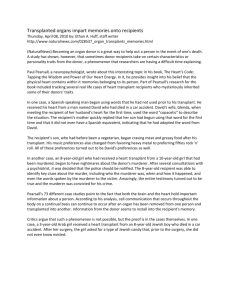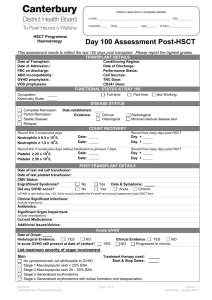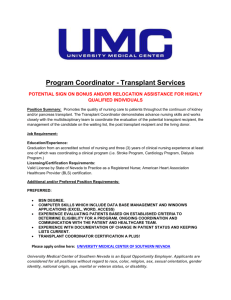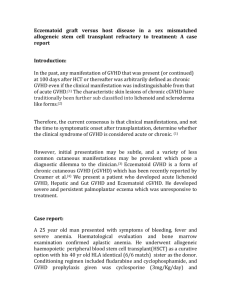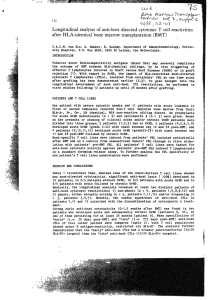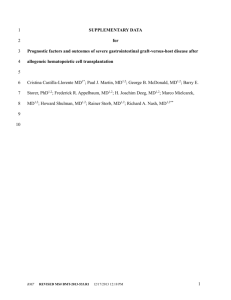Student project proposal Supervised by Dr Kate Markey and Prof
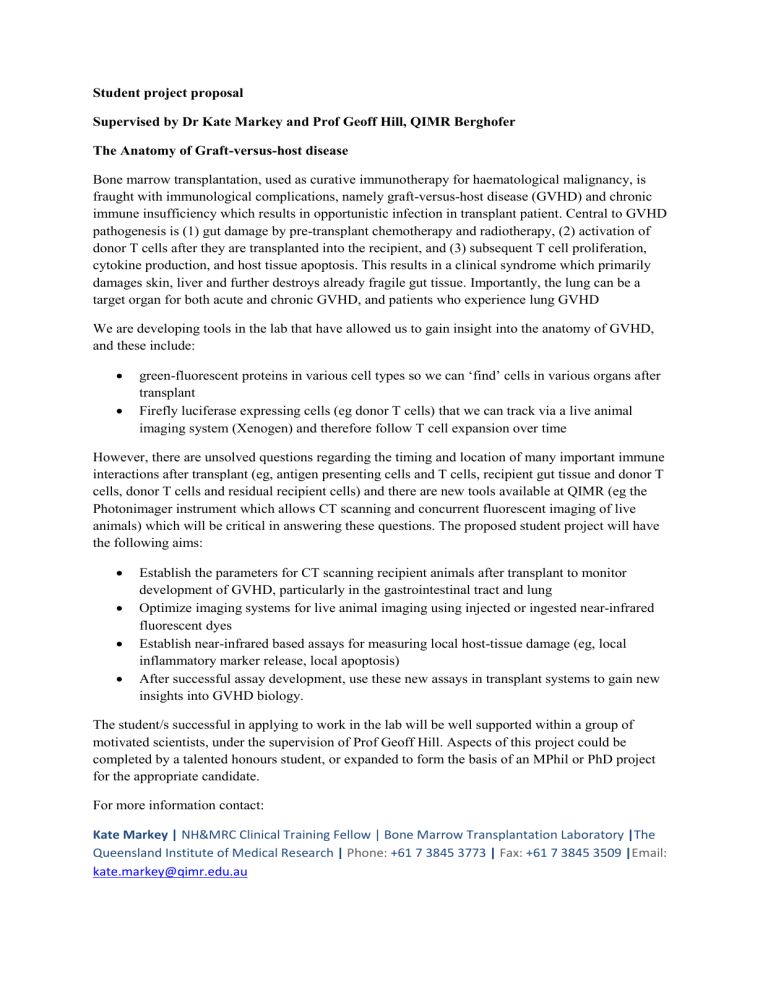
Student project proposal
Supervised by Dr Kate Markey and Prof Geoff Hill, QIMR Berghofer
The Anatomy of Graft-versus-host disease
Bone marrow transplantation, used as curative immunotherapy for haematological malignancy, is fraught with immunological complications, namely graft-versus-host disease (GVHD) and chronic immune insufficiency which results in opportunistic infection in transplant patient. Central to GVHD pathogenesis is (1) gut damage by pre-transplant chemotherapy and radiotherapy, (2) activation of donor T cells after they are transplanted into the recipient, and (3) subsequent T cell proliferation, cytokine production, and host tissue apoptosis. This results in a clinical syndrome which primarily damages skin, liver and further destroys already fragile gut tissue. Importantly, the lung can be a target organ for both acute and chronic GVHD, and patients who experience lung GVHD
We are developing tools in the lab that have allowed us to gain insight into the anatomy of GVHD, and these include:
green-fluorescent proteins in various cell types so we can ‘find’ cells in various organs after transplant
Firefly luciferase expressing cells (eg donor T cells) that we can track via a live animal imaging system (Xenogen) and therefore follow T cell expansion over time
However, there are unsolved questions regarding the timing and location of many important immune interactions after transplant (eg, antigen presenting cells and T cells, recipient gut tissue and donor T cells, donor T cells and residual recipient cells) and there are new tools available at QIMR (eg the
Photonimager instrument which allows CT scanning and concurrent fluorescent imaging of live animals) which will be critical in answering these questions. The proposed student project will have the following aims:
Establish the parameters for CT scanning recipient animals after transplant to monitor development of GVHD, particularly in the gastrointestinal tract and lung
Optimize imaging systems for live animal imaging using injected or ingested near-infrared fluorescent dyes
Establish near-infrared based assays for measuring local host-tissue damage (eg, local inflammatory marker release, local apoptosis)
After successful assay development, use these new assays in transplant systems to gain new insights into GVHD biology.
The student/s successful in applying to work in the lab will be well supported within a group of motivated scientists, under the supervision of Prof Geoff Hill. Aspects of this project could be completed by a talented honours student, or expanded to form the basis of an MPhil or PhD project for the appropriate candidate.
For more information contact:
Kate Markey | NH&MRC Clinical Training Fellow | Bone Marrow Transplantation Laboratory |The
Queensland Institute of Medical Research | Phone: +61 7 3845 3773 | Fax: +61 7 3845 3509 | Email: kate.markey@qimr.edu.au

